
The German Panzerkampfwagen IV medium tank, abbreviated PzKpfw IV, Pz. IV, or T-IV, was created by Friedrich Krupp AG. Production started in 1937 and continued until the very end of the Second World War. The Pz. IV became one of the most mass-produced Wehrmacht tanks, with 8,686 units built.
The Pz. IV was modified and improved nine times throughout its production, so it remained relevant in use throughout the war. Depending on the modification of the tank, the mass was from 18.4 to 25 tons.

Panzer IV Ausf. C, 1943.Photo Bundesarchiv, Bild 183-J08365 CC-BY-SA 3.0
The tank body consisted of forged steel, rolled armor with a hardened surface. The tank had three compartments separated by bulkheads: a control, a fighting, and a power compartment.
The thickness of the armor was, depending on the modification, from .4 to 3.15 inches. Starting in 1943, .2″ thick shields were also installed to help protect the sides and the back of the tower from anti-tank rifles and shells.

Panzer IV tank at Duxford.Photo Gregd1957 CC BY-SA 3.0
Pz.IV tanks were produced with the following weapons:
– Modifications A-F had KwK37 75-mm guns.
– Modification G had a KwK40 75-mm gun with a barrel length of 43 calibers.
– Modifications H-K had a KwK40 75-mm gun with a barrel length of 48 calibers.
More…
517
129
172
Los Angeles: Watch How Cremation Happens! You Will Be Left Speechless
More…
685
171
228

The First Red Flag Of Bipolar Disorder! (Quick Test)
More…
437
109
146

A Panzer IV Ausf. E showing signs of weapon impacts on the turret and the edge of the gun barrel.Photo: Bundesarchiv, Bild 101I-783-0117-113 Dörner CC-BY-SA 3.0
The tanks were additionally equipped with two 7.92-mm MG-34 machine guns. They carried enough ammunition for 80-87 75-mm shots, as well as 2,700-3,150 cartridges for the machine guns.
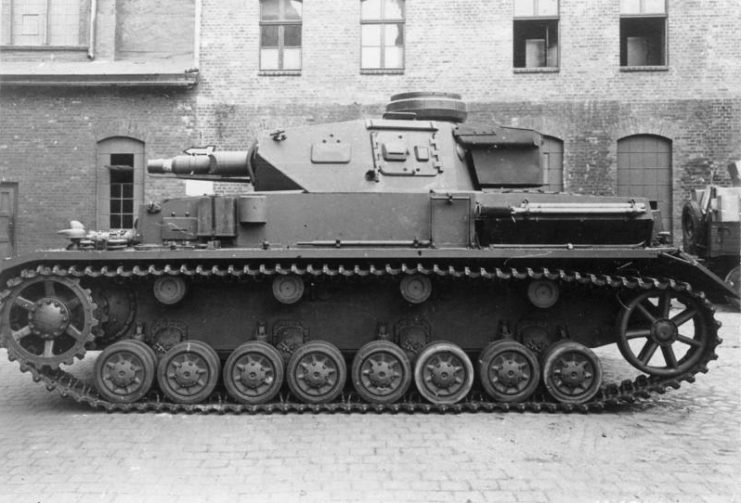
The short-barreled Panzer IV Ausf. F1. Bundesarchiv, Bild 146-1979Anh.-001-10 CC-BY-SA 3.0
The Pz.IV was equipped with a V-shaped 12-cylinder four-stroke carburetor engine for liquid cooling, using engine models HL 108TR, HL 120TR, and HL 120TRM from Maybach. Depending on the model of the engine, the power was from 250 to 300 hp.
The maximum speed reached by the tank on highways was 25 mph. Their range was about 124 to nearly 200 miles, depending on road conditions and tank modifications. The crew consisted of 5 people.
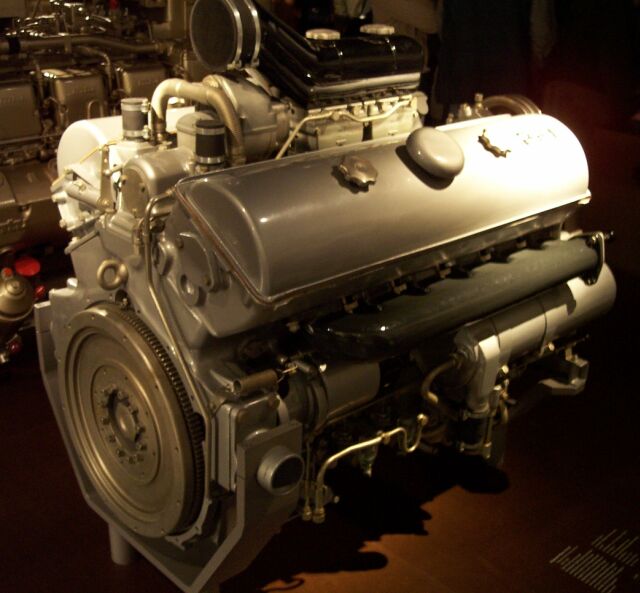
The 300 horsepower Maybach HL 120TRM engine used in most Panzer IV production models.Photo: Stahlkocher CC BY-SA 3.0
Pz.IVs were used during the Anschluss of Austria, and later during the occupation of the Sudetenland of Czechoslovakia.
Soviet tankman Grigory Panezhko, in his book Notes of a Soviet Officer (Записки советского офицера) recalls the first meeting with the German Panzer IV tank in June 1941: “We froze when we saw the ugly, monstrous tanks of bright yellow tiger color appearing from Sitno gardens. They slowly rolled in our direction, sparkling with tongues of shots.”
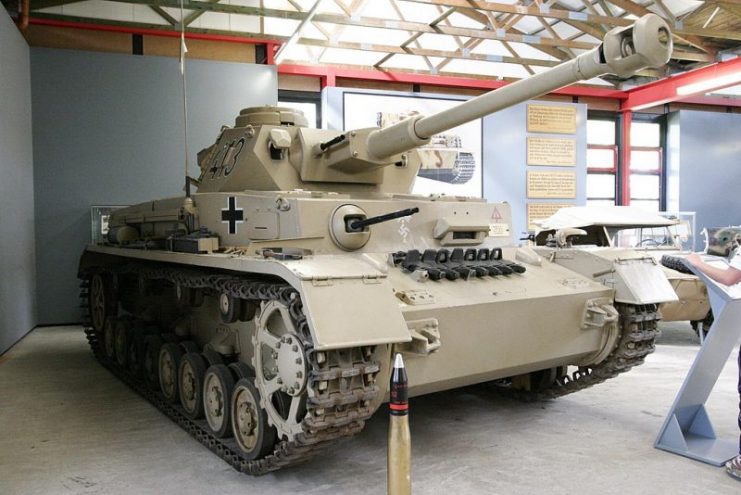
A Panzer IV Ausf. G in desert colours, bearing the palm tree insignia of the 15th Panzer Division of the Afrika Korps.Photo aku13 CC BY-SA 3.0
The Pz.IV was widely used in all theaters of military operations during World War II. For example, these tanks comprised about 60% of all German tanks involved in Operation Citadel. After the appearance of the Panther, it was planned to cease production of the Pz.IV, but thanks to General Guderian this did not happen.
 Soldier during a Training on a Panzer IV.Bundesarchiv, Bild 183-J08352 CC-BY-SA 3.0
Soldier during a Training on a Panzer IV.Bundesarchiv, Bild 183-J08352 CC-BY-SA 3.0In addition, this tank was exported, and for a long time it was in service in Finland, France, Croatia, Bulgaria, Spain, and other countries.
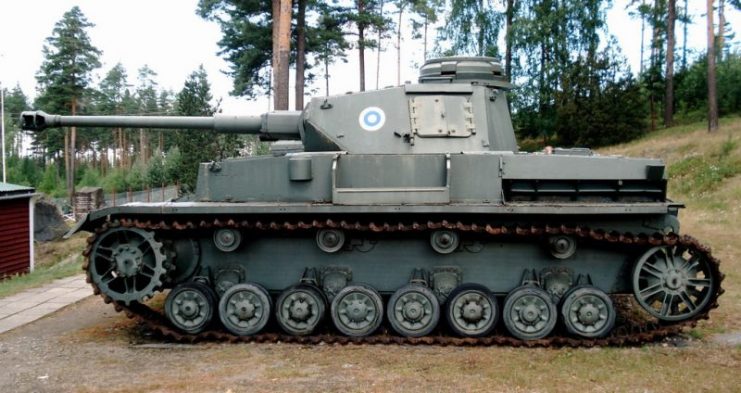
PzKpfw IV Ausf J in Finnish Tank Museum, Parola.Photo Balcer CC BY 2.5
The Pz. IV was repeatedly used after the Second World War. It participated in the 1956 Suez conflict, the 1948-1949 Israel War of Independence, the 1967 Six-Day War, the Iran-Iraq War of 1980-1988, and several other conflicts.
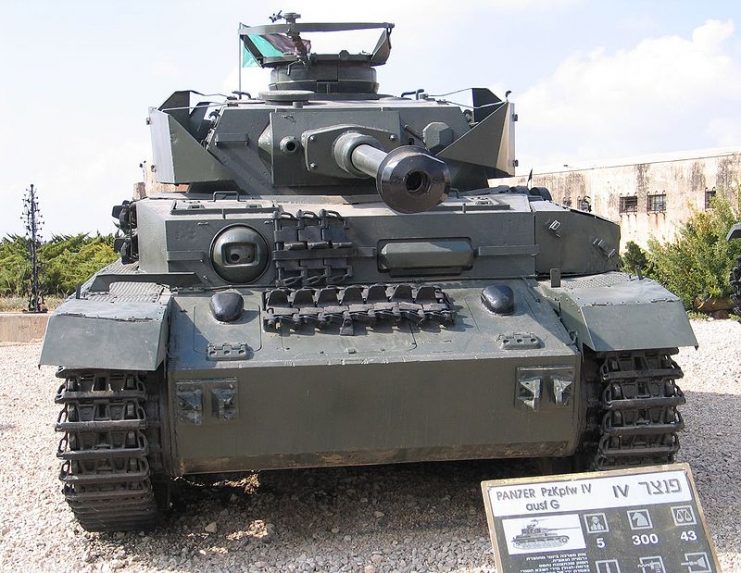
‘PzKpfw IV J, captured from the Syrian Army in the Six Day War, in Yad la-Shiryon Museum, Israel. 2005.Photo Bukvoed CC BY 2.5

Panzer IV Ausf. C 1943.Photo Bundesarchiv, Bild 183-J08365 CC-BY-SA 3.0

A British Crusader tank passing a burning German Panzer IV during Operation Crusader, late 1941.
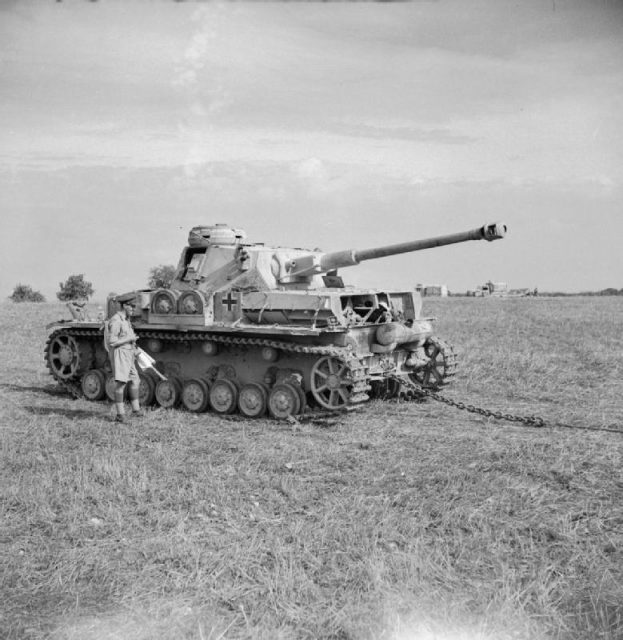
A captured German PzKpfw IV G used for anti-tank weapon tests by British Eighth Army, Italy 1943

A Panzer IV Ausf. G of the 1st SS Panzer Division “Leibstandarte Adolf Hitler” near the Arc de Triomphe in Paris, 1942. Bundesarchiv, Bild 101III-Zschaeckel-170-20 Zschäckel, Friedrich CC-BY-SA

A Panzer IV-A performing a water crossing exercise demonstration while being observed by Wehrmacht officers on the shore. Bundesarchiv, Bild 146-1978-120-15 CC-BY-SA 3.0
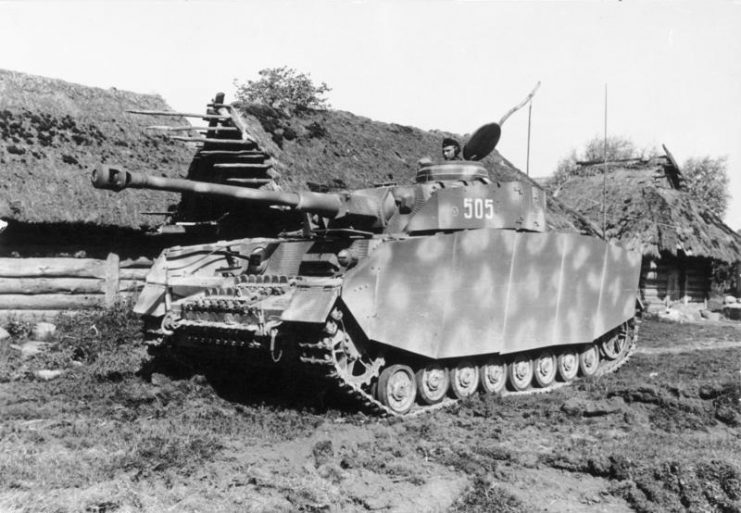
A PzKpfw IV Ausf. H of the 12th Panzer Division carrying Schürzen skirting operating on the Eastern Front in the USSR, 1944. Bundesarchiv, Bild 101I-088-3734A-19A Schönemann CC-BY-SA 3.0
 France, Panzer IV moving trough a village.Bundesarchiv, Bild 101I-721-0378-28 Vennemann, Wolfgang CC-BY-SA 3.0
France, Panzer IV moving trough a village.Bundesarchiv, Bild 101I-721-0378-28 Vennemann, Wolfgang CC-BY-SA 3.0

German Panzer-IV, version “D” on a training exercise in March 1940.Photo Bundesarchiv, Bild 101I-124-0211-18 Gutjahr CC-BY-SA 3.0
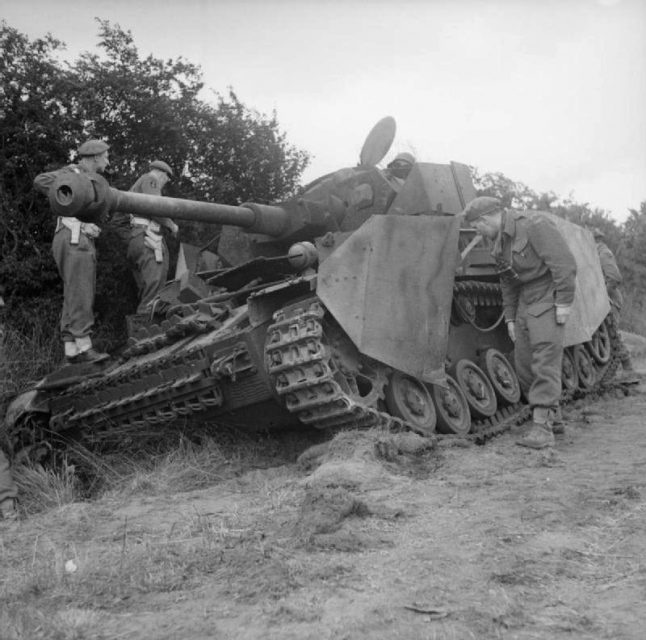
Officers inspect a German Mk IV tank knocked out by the Durham Light Infantry, 11 June 1944.

Pz.Kpfw IV Ausf J in Finnish Tank Museum, Parola.Photo Balcer CC BY 2.5

Pz.Kpfw-IV in Belgrade Military Museum, Serbia.Photo PetarM CC BY-SA 4.0

PzKpfw IV Ausf G in Yad la-Shiryon Museum, Israel.Photo Bukvoed CC BY 2.5
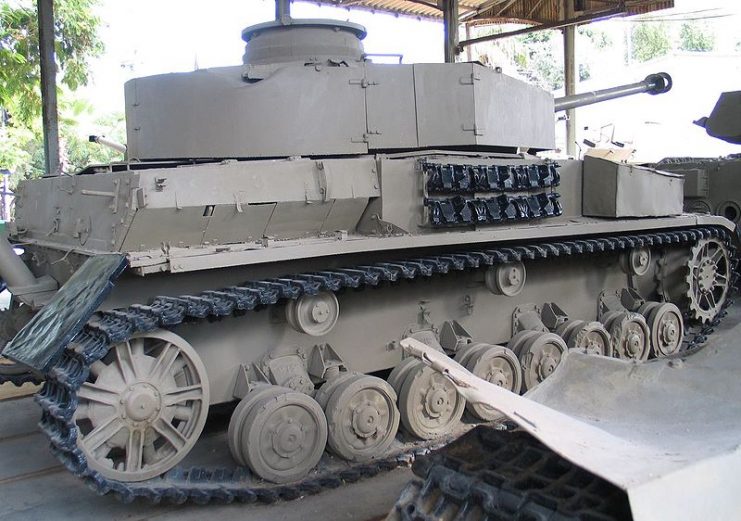
PzKpfw IV in Batey ha-Osef Museum, Israel.Photo Bukvoed CC BY 2.5
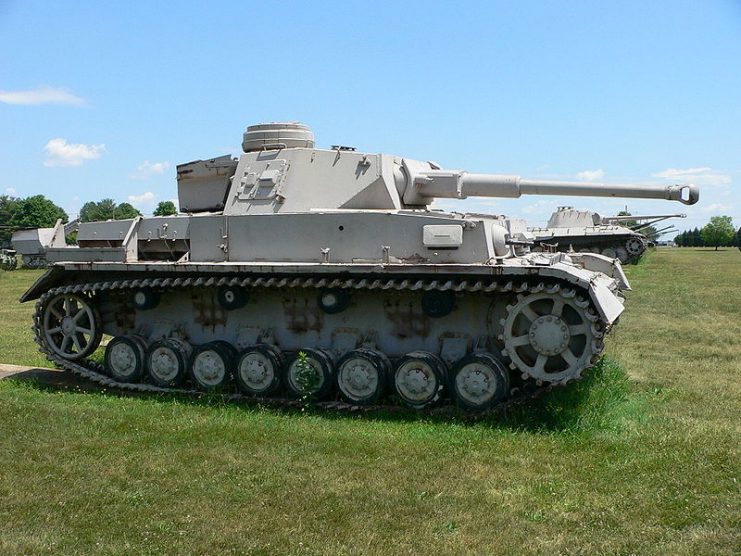
The 1942 Panzer IV Ausf. F2 was an upgrade of the Ausf. F, fitted with the KwK 40 L 43 anti-tank gun to counter Soviet T-34 medium and KV heavy tanks.Photo Mark Pellegrini CC BY-SA 2.5
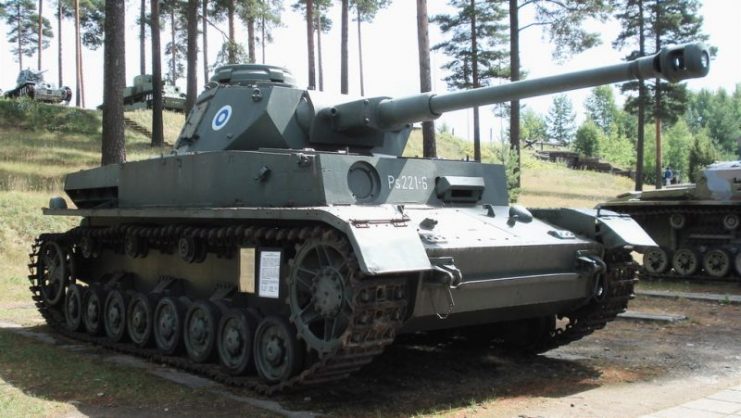
The Ausf. J was the final production model, and was greatly simplified compared to earlier variants to speed construction. This shows an exported Finnish model.Photo: Balcer CC BY 2.5





